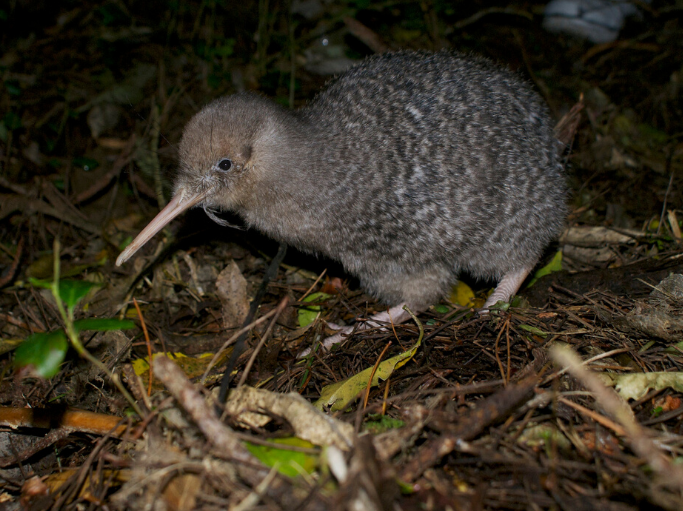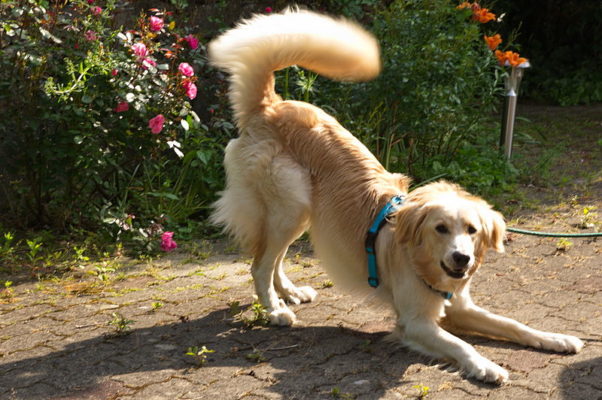As families and sometimes pets head off to holiday spots for summer, now is a good time to remember that dogs – even Pekinese and the family poodle – can be a deadly threat to kiwi. An exploratory grab can crush the fragile bones of a bird’s chest, even if the dog is ‘retrieving’ rather than trying to kill.
Kiwi aversion training is often available over summer in areas where kiwi and pets or hunting dogs are likely to meet. So does the aversion training work? A comprehensive study published last year in Applied Animal Behaviour Science suggests that it is effective, but also highlights the need for a ‘refresher course’ for your dog a year or so after the initial training.

Arnja Dale (RNZSPCA) along with Christopher Podlesnik and Douglas Elliffe from the School of Psychology, University of Auckland quantified avoidance of shock-paired stimuli across 1647 sessions of kiwi aversion training (KAT) involving 1156 dogs between 1998 and 2007 at sites around the Coromandel.
“The effects of gender, age, social group size, function of dog, breed, number of training sessions and responses to training were explored for evidence of learning differences. The behaviour of dogs presented for up to five further training sessions was analysed for change with repeated exposure. The effect of one-, two- or three-year gaps between training sessions was also investigated.”

The Department of Conservation (DOC) developed the Kiwi Aversion Dog Training Programme (KAT) so that dogs to be used for recreational and professional hunting in conservation areas containing kiwi populations while minimizing the risk to kiwi.
“In this programme, dogs are trained to avoid stimuli related to kiwi through the use of response-contingent electric shock training. The training stimuli that are used are: taxidermically stuffed kiwi, dead frozen kiwi, kiwi faecal material, a two-dimensional kiwi cut-out and kiwi nesting material. Dogs that have undergone the training are then certified with a permit. Permits are issued annually.”
Before the first training, no dog avoided the KAT stimuli – all dogs were interested in the kiwi training props. All dogs showed avoidance at the end of the first training session, but to varying degrees.
“After the first session, 60% of dogs showed strong avoidance, 33% moderate avoidance, and the remaining 7% showed indifference rather than interest. That is, no dog showed interest in the KAT stimuli after training. Nevertheless, training was clearly less than completely effective, and there are several possible reasons for this.”
Firstly, only one avoidance conditioning trial was conducted in the first session – one chance to learn.
“It has previously been reported that multiple training sessions are required to produce avoidance. One shock was, in the present study, sufficient to eliminate interest in the KAT stimuli, but it did not always produce strong avoidance. Perhaps, a single conditioning trial is not always sufficient to produce a clear association between the KAT stimuli and the aversive electric shock. Supporting this interpretation, repeated training sessions, even if separated by one year, produced more consistent strong avoidance. Similarly, the shock may not have been punishing enough fully to eliminate the behaviour of approaching the stimuli for all dogs.”
Most, but not all dogs, continued to show avoidance behaviour when they were assessed at the start of their second training session.
“When presented with the training stimuli at the second training session, 69% of the dogs displayed avoidance, 88% did so at their third training session, 86% at the fourth session and 100% at their fifth session. Where avoidance was not displayed at a repeated training session, the dog underwent aversion training again.”
The fact that 26% of the dogs showed interest in, rather that avoidance of or indifference to, the KAT stimuli at the start of their second training session suggests a second reason for less than complete effectiveness of training.
“The time lapse of one year between KAT sessions may simply have been too long for the memory to be retained. Further, dogs may have encountered kiwi during the interval between sessions without experiencing the associated punishment. This would be expected to lessen learned avoidance.”
Like people, some dogs also learn faster than others. You can teach an old dog new tricks – but it may take a little longer.
“Age at the time of the first training session affected the training responses, with younger dogs generally showing higher levels of avoidance than older dogs. Because we found that avoidance in the initial training decreased with age, we recommend that training start as early as possible.”
Gender had no effect on learning.
“This is not unexpected as there has been no gender differences have been identified in the olfactory apparatus in dogs, despite gender dimorphism occurring in dogs.”
The number of dogs in a household did correlate with training differences, however.

“Dogs from single-dog households generally displayed less avoidance toward the training stimuli when compared to dogs from multi-dog households in the training sessions. The main function of most dogs from single-dog households was as pets, whereas most dogs from multi-dog households were used mainly for hunting. It is possible that pet dogs are not subject to the same training regime as hunting dogs, and therefore respond differently to the training stimuli.”
Breed differences were also observed.
“Breed was found to influence the effectiveness of the training, with terrier and working breed dogs showing higher levels of avoidance of the training stimuli, and non-sporting dogs showing the lowest levels of avoidance.”
Dogs with a three-year gap or longer between training sessions also showed lower levels of avoidance, highlighting the importance of regular refresher training.
“There was no difference found in avoidance of the training stimuli if the dogs were trained annually or biannually. However, a gap of three years did significantly decrease avoidance. This is the longest period of time assessing the retention of avoidance conditioning to date. Once a dog has been through training twice, the length of time till the next session did not significantly alter the dogs’ avoidance of the training stimuli. It is recommended that there is a minimum of annual sessions for at least the first two training sessions.”
It should also be noted that the training involved kiwi props – not actual living kiwi. How well the training holds when a dog encounters the stimulus of a living, moving bird wasn’t investigated.
“The ecological validity of the training is not yet established. That is, further research is needed to demonstrate that KAT-trained avoidance generalizes to live birds, and not just to the stimuli used during training.”
This research is published in the journal Applied Animal Behaviour Science. Only the abstract is freely available online.

